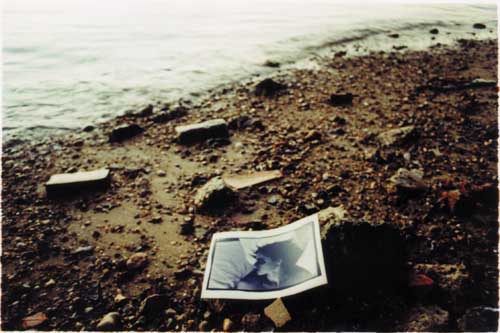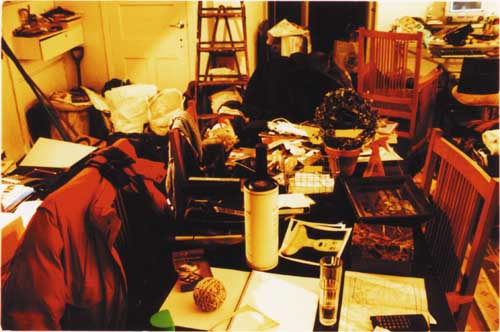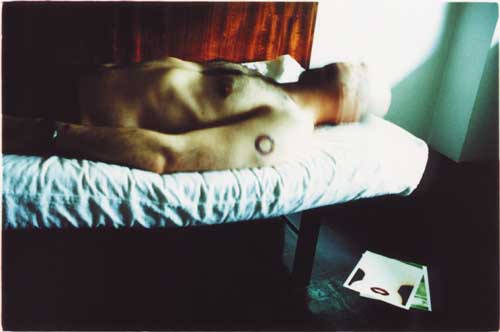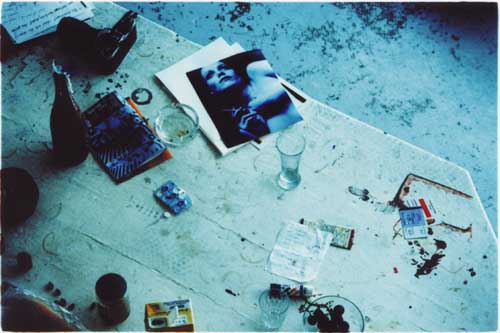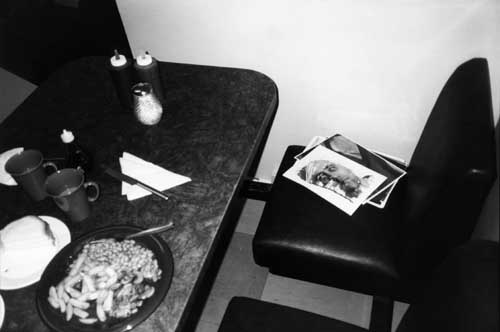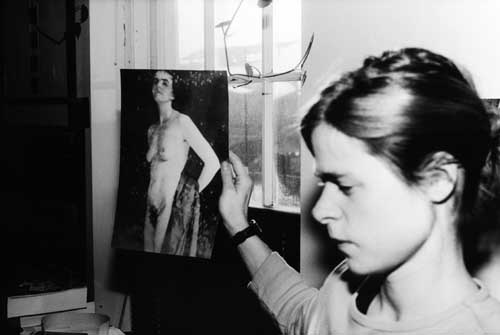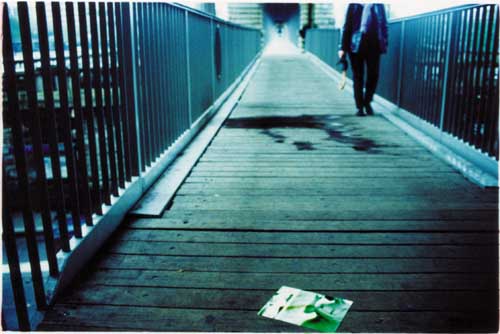
FLEEING THE LIGHT
At the conceptual centre of Marc Atkins's new series of photographs, "Equivalents", is an image of the Roman Forum: physical remnants whose ruined state underlines the permanence, or at least the endurance, of the idea they represent, which is that of permanence itself. Yet in Atkins's hands, the image starts to dissolve, colours begin to leach away, and the monuments become perishable. The stone achieves zero gravity, weighs less than photographic paper, is outlasted not only by the snapshot in which it is contained, but also by the discarded portrait whose bright colours dominate the foreground.
The tourist shot includes an extraneous element, which is the Trojan Horse of art in an era of mechanical reproduction. Rome itself was founded on the success of the original Trojan Horse. In Atkins's work, the strategic distraction is that of point of view. We might expect to look at the Forum, but instead we look at a portrait we cannot properly see. The correct angle of approach to the object of contemplation is inacessible, located somewhere in the space that lies behind the surface of the photograph. Every photograph in the new series involves this dynamic, whereby the frame does not mark out what we look at but opens onto a scene in which looking is already taking place. The object of contemplation is less the photograph in the show than the photograph it depicts, the object that has been placed or abandoned in an unavailable narrative. These discards are often slight in appearance, yet the aesthetic strategy of the work gives them an extraordinary power over the environments in which they appear. They flout the architectural logic of receding vistas; the discipline embodied in the perspectival view of a bridge is deflected, offset by a casual and stylish display of female physical power, in an impromptu celebration of indifference to male control.
The allocation of relative degrees of power to gendered points of view is systematically troubled in this work. One shot features a male figure, head apparently swathed in bandages, but actually caught in a rapid movement blur; the effect proposes a scenario of medical interference which places at the dead centre of attention a tattoo resembling a raised welt; this carefully inflicted injury rhymes disturbingly with lips brightly outlined in the discarded female portrait lying under the bed. The allusion to a vampiric archetype allows some play with the idea of the photograph as afraid of the light, and as a reflecting surface in which the face of the observer cannot be seen, as well as conjuring up the vulnerability of the subject detached from an original setting. Just as the vampire needs to leave deposits of Transylvanian earth in various safe houses, so Atkins deposits the traces of his work in a variety of locales: Italy, Poland, France, U.S.A., London, to name only those which are immediately obvious.
Many of the discards appear to have been put down momentarily before being caught up again, gaining their place in the landscape for no longer than it takes to make a telephone call, suggesting that photographs and settings are potentially interchangeable, subject to a process of endless translation. A significant number of the environments that Atkins is drawn to record the after-effects of this process: tables, floors and walls have the appearance of a palimpsest of innumerable impositions; they have been tattooed, literally, by a history of domestic rhythms, largely of ingestion and regulation. The Atkins landscape is anchored in scenarios of neglect, of clutter, dilapidation, and stratified impressibility: an ancient drain; the Thames foreshore; the locked doors of a burial vault. The photograph by the drain is about to be disposed of in a setting which disposes of everything; the foreshore is a place which remembers everything that has ever happened to it, but which is both ignored and despised; the burial vault is a place that has been set aside for commemoration but which has every appearance of being forgotten.
The ratios of remembering and forgetting, of permanence and impermanence, of control and vulnerability, are rendered most exactingly in a pair of images that feature the same woman: once as the subject of a discard, once as an apparent intermediary, poised in the moment of translation from subject into object and back again. The first of these images is introduced into a London tube carriage, a place of intense and constant scrutiny of faces and representations, yet it is placed in a position that is invisible to the ordinary passenger, and can only be seen by contrivance, by using the point of view of committed voyeurism, a point of view that is both cherished and disowned. In the other image, the same woman is seen holding up for inspection the photograph of a female nude, yet her own gaze is averted, away from both the photograph itself and from the viewer, who can only inspect the representation of female nudity by ignoring the "real" woman.
One's glance travels backwards and forwards, uncertain of the true focus of the work, of the social and artistic decorum it bears witness to, of the attitudes and self-consciousness of the two women implicated in the scene, of the nature of the privacy it may or may not violate, of the degree of exploitation, or refusal to exploit, it requires from the viewer. This constant passing from one point to another occurs within the individual composition, but also between compositions, and across the whole series. Atkins's work is composed of passages that each successive instance of construction translates into equivalent, but different, terms; it always brings with it the trace of its origins, the ground from which it has emerged and to which it will return, and it is locked into a cycle of addiction, succumbing constantly to a light from which it must always retreat.Rod Mengham
Fotografie z wystawy
Copyright ©2001 Galeria FF £DK, M.Atkins, R.Mendham.

